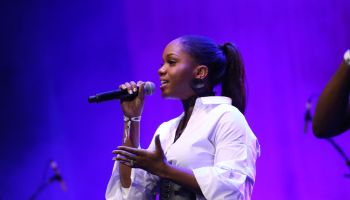For generations, Christmas carols were sung by the world everywhere during the holiday season. It was a traditional past time to gather around and regal others with songs and poems.
The Christian orders of the day demanded the hymns be sung to propagate Trinitarian Christian doctrine claiming that God the Father, Jesus the Son, and the Holy Spirit are all equals, three beings in separate forms. Arianism, on the other hand, claimed that Jesus was deistically lower than God was, because He was created afterwards in human form.
The songs of ancient times were in Latin, the scholarly language of the day, and as such, were immensely unpopular.
The ninth and tenth centuries saw further evolution of what would become the traditional Christmas carol because of rhyming verses. The introduction of rhyme, along with the cultivation of pagan lore like “Veni, redemptor gentium,” or “Savior of the Nations, Come,” attributed to Milanese Bishop St. Ambrose, brought tuned chants a bit closer to the songs of modern times. St. Francis of Assisi recognized the unpopularity of Christmas hymns, and set out to change it by transforming the holiday through theatrics, music, and for the first time, carols sung in audiences’ native languages. The abandonment of Latin in the thirteenth century was popularized in nativity scenes and productions across Europe.
Martin Luther continued the legacy of folk songs, but by the time the Puritan movement came about, the cheery Christmas spirit was discarded. Puritans did not believe in religious song, and banned the practice in Parliament in 1647. The transition from tuned, doctrinal chants, to folksy carols and finally Christmas songs is very telling of the journey Christ’s unofficial birthday celebration had to endure just to be recognized.Now, when people speak of the “Christmas spirit,” they can hold fast in the fact that carols do not just represent songs, but thousands of years of Christian history.Today, music artists keep the tradition alive with slews of Christmas-themed albums, like Justin Bieber’s recent work, featuring classics like “Drummer Boy” and “Silent Night.”
Several different Christmas episodes, apart from the birth of Jesus itself, are described in Christmas carols, such as:
- The Annunciation, for example Gabriel’s Message
- The Census of Quirinius, a rare subject, but touched on in On a Day When Men Were Counted by Daniel Thambyrajah Niles (1964)
- The Annunciation to the shepherds, for example While Shepherds Watched Their Flocks
- The Adoration of the shepherds, for example the Czech carol Nesem Vám Noviny (translated into English as Come, All Ye Shepherds)
- The Star of Bethlehem, for example, Star of the East
- The journey of the Magi and the Adoration of the Magi, for example We Three Kings
- The Massacre of the Innocents, for example the Coventry Carol
In addition, some carols describe Christmas-related events which are of a religious nature, but not directly related to the birth of Jesus. For example:
- Good King Wenceslas, based on a legend about Saint Wenceslaus helping a poor man on December 26 (the Feast of Stephen)
- Ding Dong Merrily on High and I Heard the Bells on Christmas Day, reflecting on the practice of ringing church bells at Christmas
In Austria, Belgium and Germany, Christmas is celebrated by some with children dressing as “The Three Kings”, carrying a star on a pole. Going from house to house from New Year’s Day to January 6, the children sing religious songs and are called “star singers”. They are often rewarded with sweets or money, which is typically given to a local church or charity.
Text “PRAISE” To 64636…Standard Messaging Rates Apply
Follow us on Twitter @PraiseDC
Follow @praisedc for the latest gospel and local news!
— 104.1 PraiseDC (@Praisedc) October 24, 2012
Find us on Facebook!
Also see…
- Marvin Sapp & Mary Mary Lead Gospel Grammy Nominations
- Belcher Murder-Suicide: Orphaned Daughter Eligible To Receive $1,000,000 From NFL
- Guardian Angels Patrolling SE DC High School Where Teen Was Shot
- Maryland Begins Issuing Same-Sex Marriage Licenses
- Chick-fil-A “Celebrating” The Holiday With Jazz















